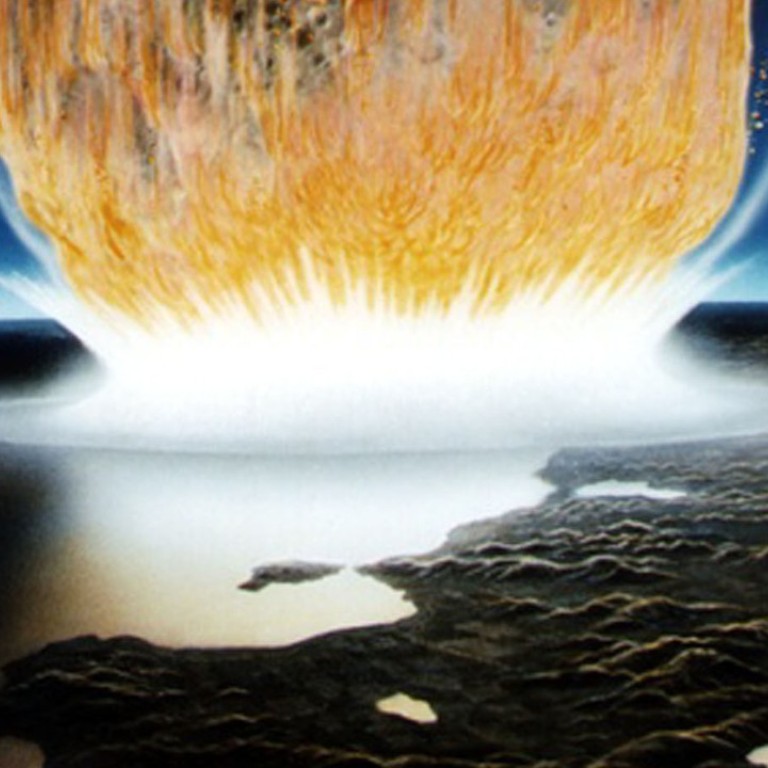
Nasa unveils programme aimed at preventing an asteroid apocalypse
Space agency describes the scenario as ‘low probability but high consequence’, meaning it will probably never happen, but if it does we’re toast
Among Earth’s natural disasters – hurricanes, floods, earthquakes – the one humans probably ponder least is asteroids, huge objects zipping through our solar system at ludicrous speeds.
Federal officials call an asteroid or comet collision “low probability but high consequence”, Nasa-speak for it will probably never happen, but if it does we’re toast. With that in mind, the US and other nations have long sought to track such “near-Earth objects” (NEOs) and coordinated efforts through the International Asteroid Warning Network and the United Nations.
The Trump Administration now wants to enhance those efforts to detect and track potential planet killers, and to develop more capable means to deflect any that appear to be on a collision course.
“Fortunately, this type of destructive event is extremely rare,” said Aaron Miles, an official with the White House Office of Science and Technology Policy. But just to be safe, the government unveiled new goals this week for Nasa’s work on countering NEOs over the next decade.
More than 300,000 objects larger than 40 metres (131 feet) wide orbit the sun as NEOs, Nasa estimates, many being difficult to detect more than a few days in advance.
Forty metres is about the size an object must be to make it through the atmosphere without burning up; thousands of much-smaller meteors disintegrate harmlessly each day far above the planet. The meteor that injured more than 1,000 people in Chelyabinsk, Russia in February 2013, mainly by glass shattered from the shock wave of its explosion, was believed to be about 20 metres (65 feet) wide.

The most recent encounter with an asteroid was on June 2, when a two-metre boulder dubbed 2018 LA entered the atmosphere at 10 miles per second (38,000 mph) and exploded over Botswana.
Nasa has documented roughly 96 per cent of the objects large enough to cause a global catastrophe since work began in 1998, said Lindley Johnson of Nasa’s Planetary Defence Coordination Office. On Thursday alone, five massive asteroids zipped within 4.6 million miles of Earth – which is pretty close in space – including one called 2017 YE5, a 1,600-foot wide behemoth that, if it paid us a visit, would ruin everyone’s day. But Nasa has its number.
This growing catalogue of potentially Armageddon-causing objects offers the world years of notice about when an orbit would intercept Earth, given the immense distances asteroids and comets travel through space. For example, 101955 Bennu, a 1,600-foot wide carbon asteroid found in 1999 and which figures prominently in Nasa’s current deep-space research, has only a 1 in 24,000 chance of hitting Earth – and that is 157 years from now.

Today, Nasa’s catalogue contains 18,310 NEOs, with about 8,000 of them classified as 140 metres wide and larger. That is the size at which enormous regional effects and mass casualties would occur if one hit. How government agencies would prepare for such a calamity is a novelty to most.
“One of the key things we’re finding is that, for emergency managers, this is so different we have to first educate them,” said Leviticus Lewis, a response coordinator with the Federal Emergency Management Agency.
A chance remains that large comets from the outer solar system could suddenly appear and hit Earth with only a few months-warning. There’s also the potential for a surprise from deep space – an object with an orbit that is not bound by the sun – like the kind that showed up last October. That is when “Oumuamua”, a 400-metre, cigar-shaped oddity whizzed past the sun at almost 200,000 mph. The intriguing object was the first known to have come from interstellar space, to which it is now returning.
Nasa has devised three strategies for potentially sparing Earth from annihilation by asteroid, with each method’s effectiveness determined by the size and composition of an asteroid and how much warning there is.
Attaching a spacecraft to an asteroid – what Nasa dubs a “gravity tractor” – would alter its path because of the enlarged mass. And landing on a NEO is well within science’s current toolbox.
The European Space Agency landed on a comet four years ago and Japan’s Hayabusa 2 spacecraft is nearing an asteroid called Ryuga this month. Nasa plans a similar rendezvous in December with Bennu. The downside – an asteroid cannot be larger than 100 metres wide for this technique to work.

A nuclear explosion on a massive asteroid would superheat the surface and cause some of the mass to slough off, Johnson said on a call June 20 with reporters. A rocket could then theoretically push the asteroid to a different trajectory. This option, however, works only for a large body of which scientists have at least a decade’s notice.
The Obama and Trump administrations have both sought more funds for asteroid research, with the annual budget jumping from US$12 million to US$150 million in this administration’s most recent request.
Most of that funding is for Nasa to complete its Double Asteroid Redirection Test (DART) mission in 2021-2022. The goal is to hit the smaller “moonlet” of a binary asteroid called Didymos, to learn how well we may be able to alter the course of a future killer rock.
If successful, mankind will know it has a viable option, if someday we see something headed our way.

